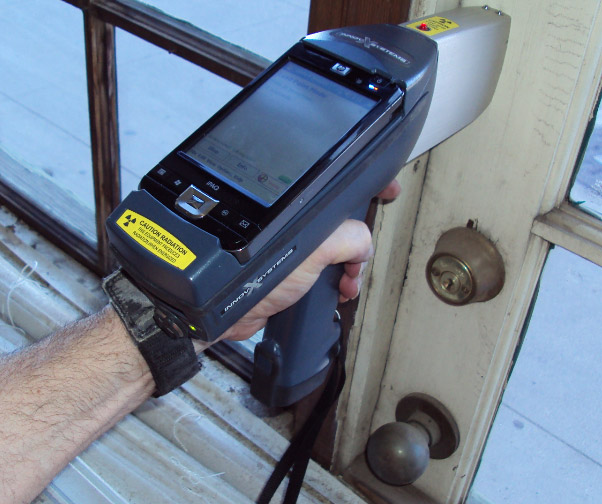Comprehensive Lead Paint Removal Service in NYC-- Certified and Qualified
Comprehensive Lead Paint Removal Service in NYC-- Certified and Qualified
Blog Article
Comprehensive Guide on Effective Lead Violation Removal Strategies
In the world of environmental safety and security, dealing with lead infractions requires a precise and structured strategy. This detailed guide starts by highlighting the crucial preliminary actions of recognizing lead threats with sophisticated evaluation and testing approaches. Techniques such as XRF analysis and dirt clean sampling are vital in determining contamination resources. The overview elaborates on the value of sticking to stringent safety methods during the elimination procedure, including the usage of correct PPE and separating affected areas. The subsequent sections guarantee to discuss post-removal verification and preventative strategies, guaranteeing long-term security and compliance. Discover the elaborate details that make these techniques not just efficient but important.
Identifying Lead Hazards
Recognizing lead risks is a crucial primary step in reducing the risks connected with lead direct exposure. Lead, a harmful metal, can be present in different ecological mediums, consisting of paint, soil, water, and dust. It postures severe health and wellness risks, specifically to youngsters and pregnant women, bring about neurological damage and developing delays. Specific recognition of possible lead resources is necessary for reliable removal.
The preliminary stage in identifying lead hazards entails comprehending common lead resources within the built setting. Structures built prior to 1978 are especially prone due to the prevalent use lead-based paint during that duration. Furthermore, dirt contamination can occur from degrading exterior paint, commercial discharges, or historic usage of leaded gasoline.
An additional substantial source is lead piping and plumbing fixtures, which can seep introduce drinking water. Customer goods such as toys, porcelains, and imported items might also have unsafe lead degrees. Especially, work-related environments and hobbies involving lead can track impurities into homes.
Analysis and Testing
When attending to lead dangers, reliable analysis and testing are extremely important. First evaluation typically entails a visual examination to recognize prospective lead sources, such as deteriorating paint or contaminated dirt.

Dust wipe tasting is one more critical strategy, especially in household setups. By accumulating samples from floorings, windowsills, and other surface areas, this technique gives understandings into potential direct exposure dangers. Furthermore, dirt testing around structure perimeters is important to spot lead contamination that could posture threats, especially to kids.
Safe Removal Treatments
Upon completing detailed analysis and screening, implementing safe elimination procedures is the next vital stage in resolving lead threats. This process ensures that lead-contaminated materials are successfully and securely gotten rid of, decreasing danger to both employees and citizens. The very first step involves isolating the affected location utilizing plastic sheeting and proper sealing methods to protect against the spread of lead dust.
Employees must put on ideal personal safety devices (PPE), including respirators, gloves, and non reusable coveralls, to mitigate exposure. Using specialized devices and wet techniques, such as wet sanding or using HEPA-filtered vacuum cleaners, decreases the diffusion of lead bits. It is essential to prevent completely dry fining sand or unpleasant blowing up, as these techniques can create harmful lead dust.
Waste disposal is one more vital part; all contaminated materials have to be safely nabbed and classified according to EPA and regional regulations. In addition, extensive cleansing of the workspace with HEPA vacuum cleaners and damp cleaning makes sure the elimination of residual lead fragments.
Post-Removal Verification

Confirmation of effective lead removal, known as post-removal confirmation, is necessary to make sure the safety and habitability of the remediated location. This process includes a series of careful evaluations and examinations developed to identify any kind of residual lead bits that might pose health dangers. The initial step typically includes a visual examination to analyze the completion and high quality of the remediation work. This assessment guarantees that all well-known resources of lead have actually been attended to and that no noticeable signs of contamination continue to be.
Following the visual assessment, ecological tasting is conducted. This involves accumulating dirt, dirt, and sometimes water examples from the remediated area. Certified labs analyze these samples to measure lead degrees, guaranteeing they fall below the safety limits established by regulatory bodies such as the Environmental Defense Firm (EPA)
On top of that, air quality screening might be performed to spot airborne lead particles, especially in situations where substantial lead-based paint elimination or restoration has actually happened. The outcomes of these examinations provide quantitative data verifying that the lead levels are within acceptable restrictions.
Inevitably, post-removal confirmation offers as a crucial checkpoint, confirming the performance of the lead abatement initiatives and safeguarding important site the health and wellness of owners and site visitors.
Precautionary Measures and Upkeep

A crucial precautionary procedure consists of using lead-safe certified service providers for any type of improvement, repair, or paint activities. These professionals are educated in practices that decrease lead dirt and debris. In addition, preserving painted surface areas to avoid chipping or peeling off is essential, as wearing away paint can release lead bits into the setting.
Educational campaigns targeting homeowner and tenants concerning the risks of lead and the value of reporting any type of potential hazards can additionally boost preventative efforts. Routine cleansing using HEPA vacuum cleaners and wet mopping methods can dramatically reduce More Info lead dust build-up.
Conclusion
In recap, effective lead infraction elimination demands a thorough technique including complete assessment, exact screening, and rigorous elimination treatments. Continuous inspections and maintenance are essential to minimize future lead dangers, thus securing public health and making sure continual conformity with regulatory demands.
Report this page